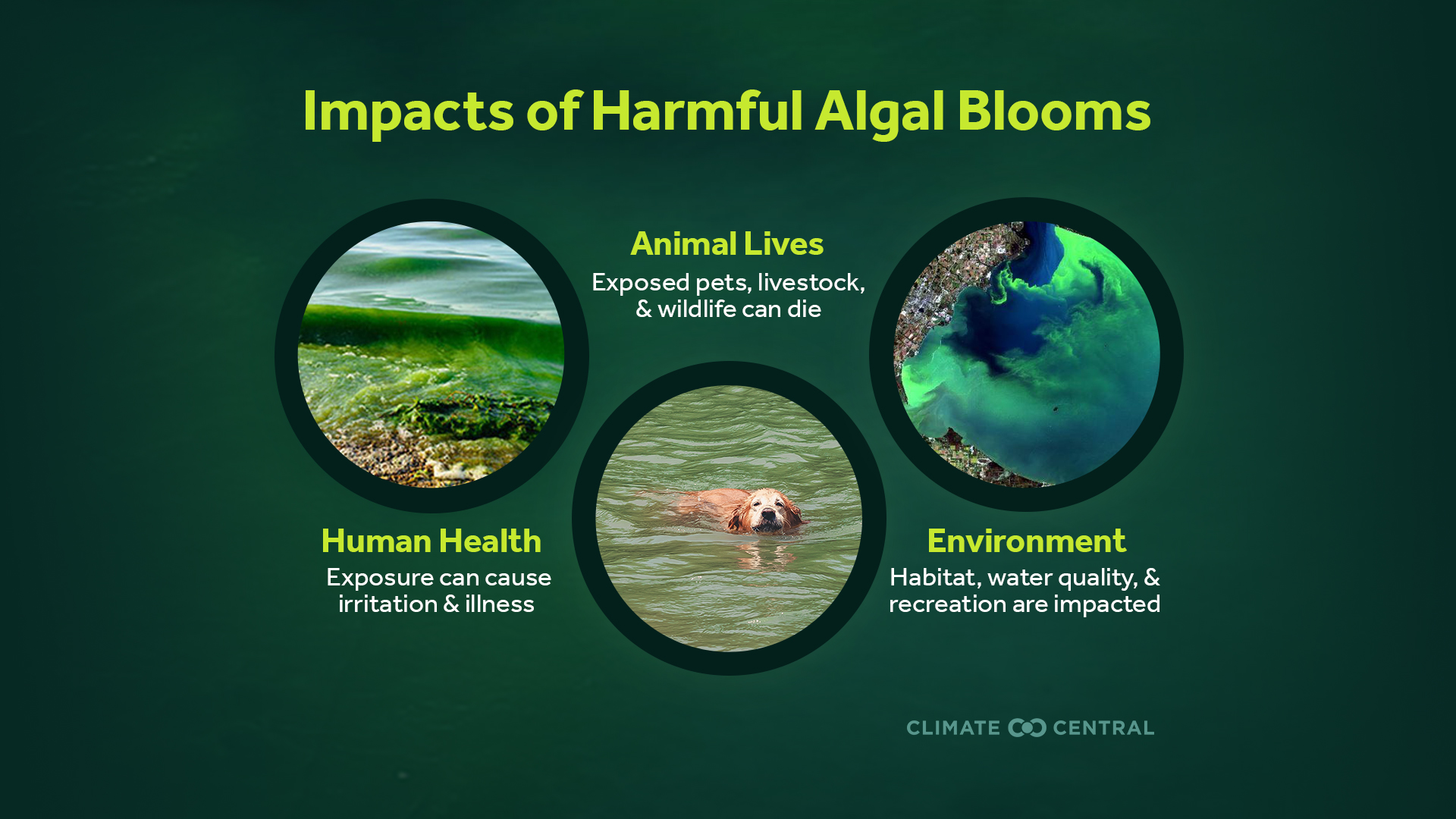California's Toxic Algae Bloom: Understanding The Causes And Consequences

Table of Contents
Causes of California's Toxic Algae Blooms
Several interconnected factors contribute to the increasing frequency and intensity of California's toxic algae blooms. Understanding these causes is the first step towards effective mitigation strategies.
Nutrient Runoff: Fueling the Bloom
Excessive nutrients, primarily nitrogen and phosphorus, act as fertilizers for algae, triggering rapid and uncontrolled growth. These nutrients originate from various sources:
- Increased fertilizer use in agriculture: Intensive agricultural practices contribute significantly to nutrient runoff, with fertilizers leaching into waterways and ultimately reaching coastal regions.
- Inadequate wastewater treatment facilities: Inefficient wastewater treatment plants can release substantial amounts of nitrogen and phosphorus into the environment, fueling algal growth.
- Urban development leading to increased impervious surfaces: The expansion of urban areas leads to increased impervious surfaces (roads, buildings, parking lots), which prevent water from naturally filtering through the soil, resulting in increased runoff carrying pollutants directly into waterways. This runoff often carries fertilizers, pet waste, and other sources of nutrients.
Climate Change: A Perfect Storm for Algae
Climate change is exacerbating the problem by creating more favorable conditions for algae growth and toxin production:
- Rising sea surface temperatures due to global warming: Warmer water temperatures accelerate algae growth and metabolic rates, leading to larger and more toxic blooms.
- Changes in ocean circulation patterns: Altered currents can transport nutrients and algae to new areas, expanding the geographical reach of blooms.
- Increased frequency and intensity of extreme weather events: Heavy rainfall events can increase nutrient runoff, while prolonged periods of calm weather can lead to stratification of the water column, creating ideal conditions for algae blooms.
Upwelling and Ocean Currents: A Natural Process, Amplified by Change
Natural upwelling events, where nutrient-rich deep water rises to the surface, can fuel algae growth. However, changes in these currents due to climate change can amplify the effect:
- Shifting patterns of upwelling due to climate change: Changes in wind patterns and ocean currents can alter the timing and intensity of upwelling, making it more likely to coincide with periods of high nutrient availability.
- Increased nutrient availability from upwelled waters: The upwelled water, while naturally nutrient-rich, becomes even more potent when combined with increased nutrient loads from pollution sources.
Consequences of California's Toxic Algae Blooms
The impacts of California's toxic algae blooms extend far beyond the immediate environment, affecting marine life, human health, and the state's economy.
Impacts on Marine Life: A Devastating Ripple Effect
Toxic algae blooms can cause widespread mortality and ecosystem disruption:
- Shellfish poisoning due to biotoxin accumulation: Shellfish filter-feed on algae, accumulating toxins in their tissues. This can lead to shellfish poisoning in humans who consume contaminated shellfish.
- Fish kills and ecosystem disruption: The toxins produced by some algae species are lethal to fish and other marine animals, causing large-scale die-offs and disrupting the delicate balance of marine ecosystems.
- Decline in commercially important species: Harmful algae blooms can decimate populations of commercially important fish and shellfish, impacting livelihoods and food security.
Human Health Risks: A Spectrum of Illnesses
Exposure to toxins produced by harmful algae can pose significant risks to human health:
- Neurotoxic shellfish poisoning (NSP): Consumption of shellfish contaminated with neurotoxins can cause neurological symptoms, including memory loss and confusion.
- Amnesic shellfish poisoning (ASP): This type of poisoning is caused by domoic acid, a neurotoxin that can lead to short-term memory loss and other neurological problems.
- Paralytic shellfish poisoning (PSP): This severe form of poisoning can cause paralysis and even death.
- Contact dermatitis from exposure to certain algae species: Skin contact with certain types of algae can cause irritation, rashes, and other skin problems.
Economic Impacts: A Costly Crisis
The economic consequences of California's toxic algae blooms are substantial:
- Closure of shellfish beds and fishing grounds: When harmful algal blooms occur, shellfish beds and fishing grounds may be closed to protect public health, leading to significant economic losses for the fishing industry.
- Reduced tourism due to beach closures and health advisories: Beach closures and health advisories can deter tourists, negatively impacting coastal communities that rely on tourism revenue.
- Increased costs associated with monitoring and mitigation efforts: Monitoring and mitigating harmful algal blooms requires significant resources, adding to the overall economic burden.
Conclusion: Addressing California's Toxic Algae Bloom Challenge
California's toxic algae blooms represent a serious and multifaceted environmental problem with far-reaching consequences. Addressing this challenge requires a multi-pronged approach focusing on reducing nutrient pollution, improving water quality, and mitigating the impacts of climate change. By understanding the causes and consequences of these blooms, we can work towards collaborative solutions to protect our precious coastal ecosystems and safeguard public health. Learn more about how you can participate in initiatives to reduce nutrient runoff, support sustainable agricultural practices, and stay informed about California's Toxic Algae Bloom alerts and advisories in your area. Your actions can make a difference in combating this growing threat to our environment.

Featured Posts
-
 Understanding The Decrease In Excessive Heat Warnings
May 30, 2025
Understanding The Decrease In Excessive Heat Warnings
May 30, 2025 -
 Glastonbury Resale Tickets Your Guide To Prices Sales And Helpful Tips
May 30, 2025
Glastonbury Resale Tickets Your Guide To Prices Sales And Helpful Tips
May 30, 2025 -
 The Killer Seaweed Threatening Australias Marine Life
May 30, 2025
The Killer Seaweed Threatening Australias Marine Life
May 30, 2025 -
 Gaza Crisis Envoys Emotional Un Appeal For Children
May 30, 2025
Gaza Crisis Envoys Emotional Un Appeal For Children
May 30, 2025 -
 Kawasaki Disease Etiology Evidence Points To A Novel Respiratory Virus
May 30, 2025
Kawasaki Disease Etiology Evidence Points To A Novel Respiratory Virus
May 30, 2025
